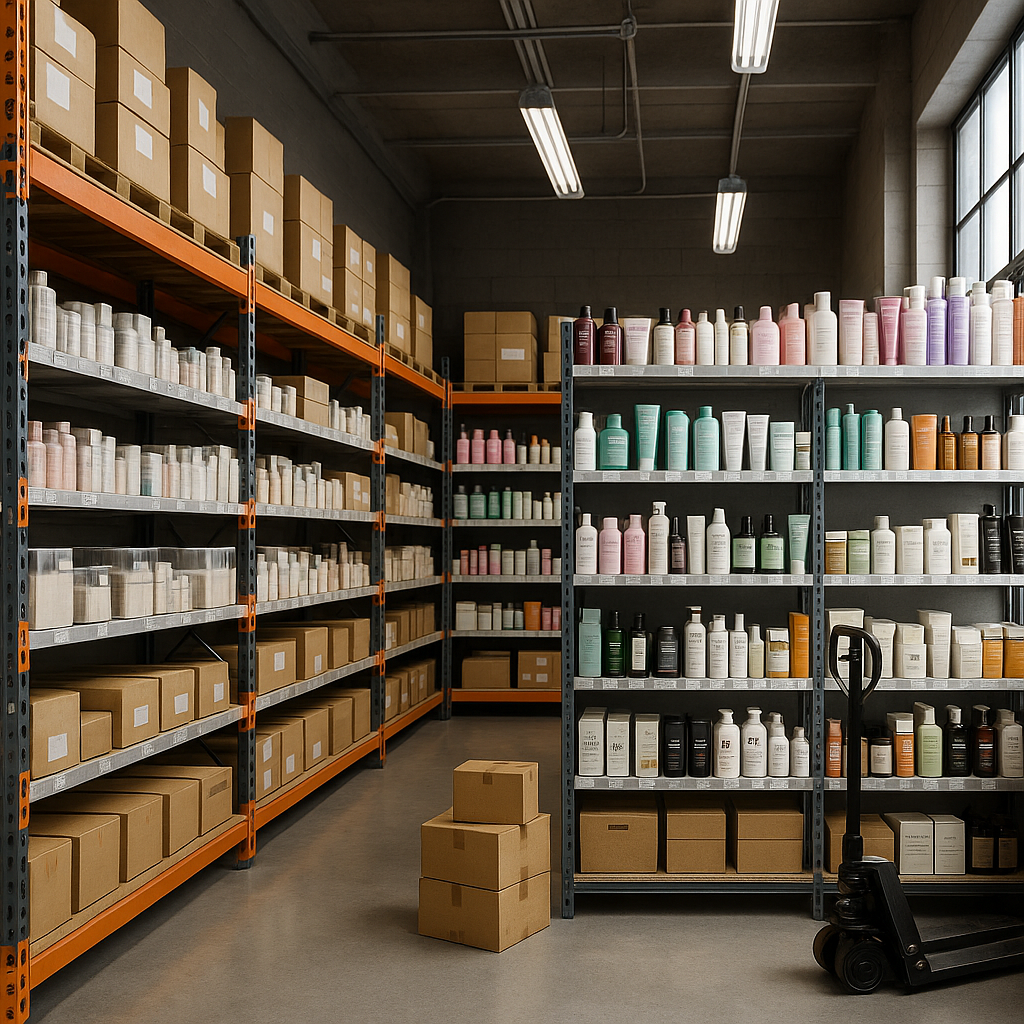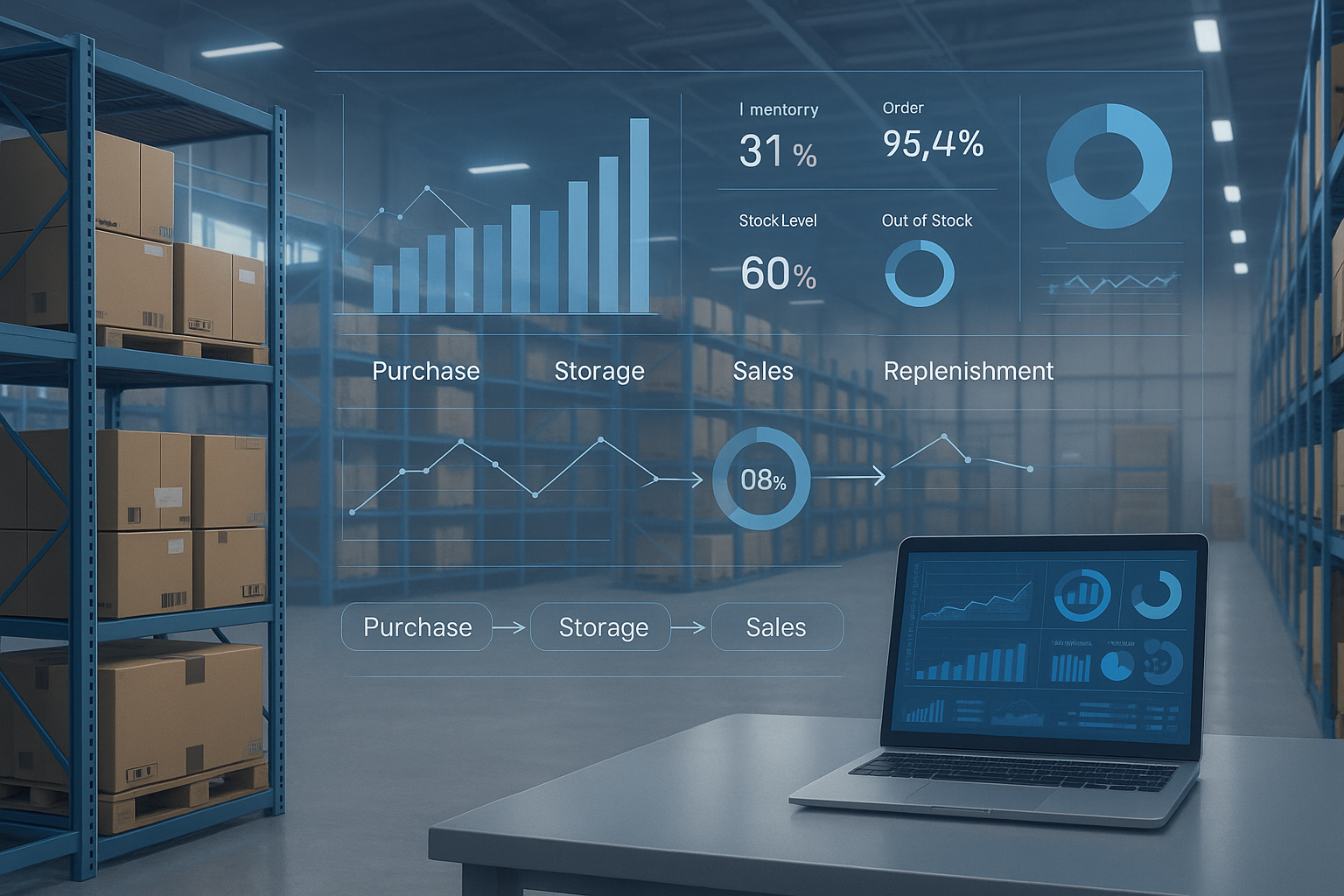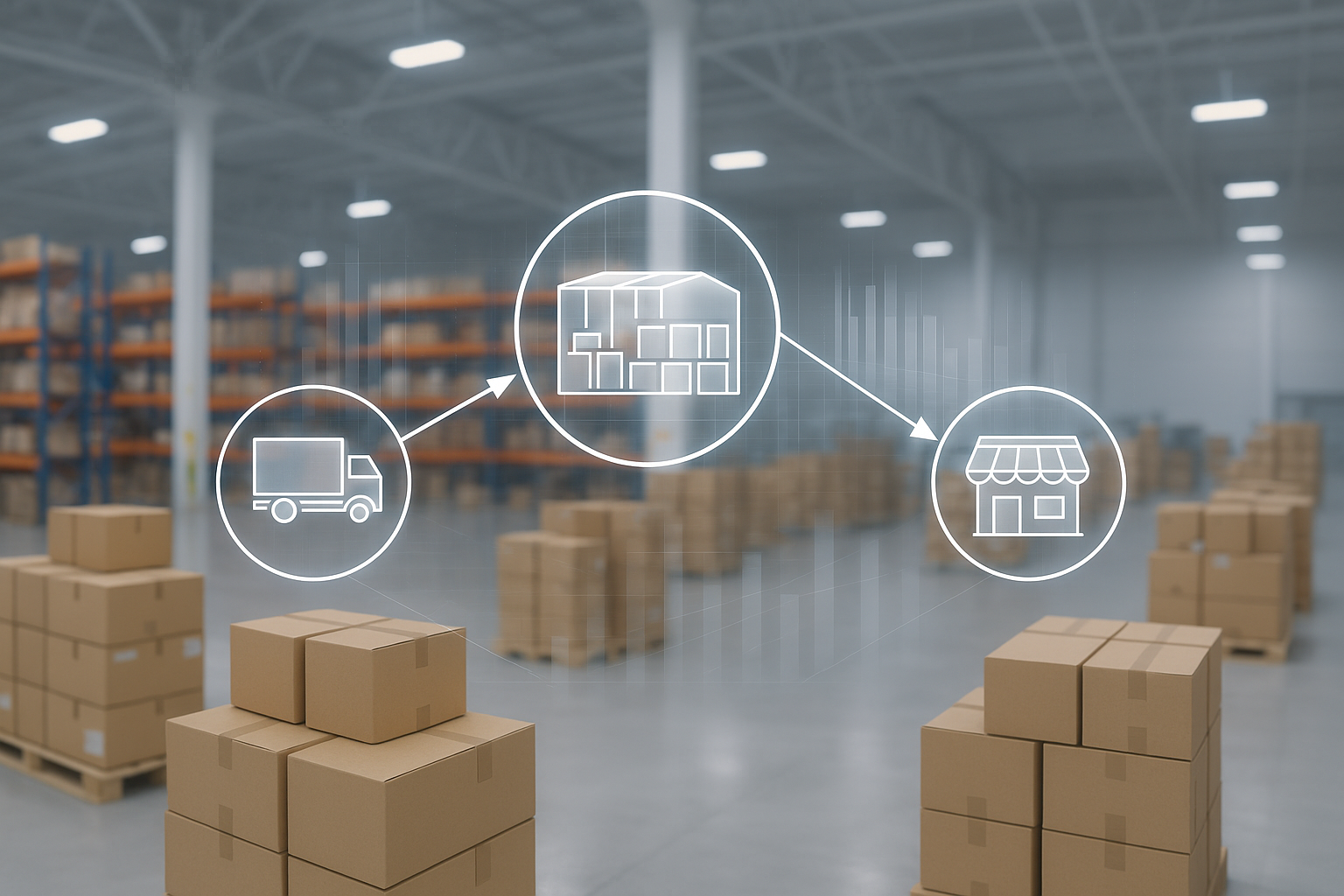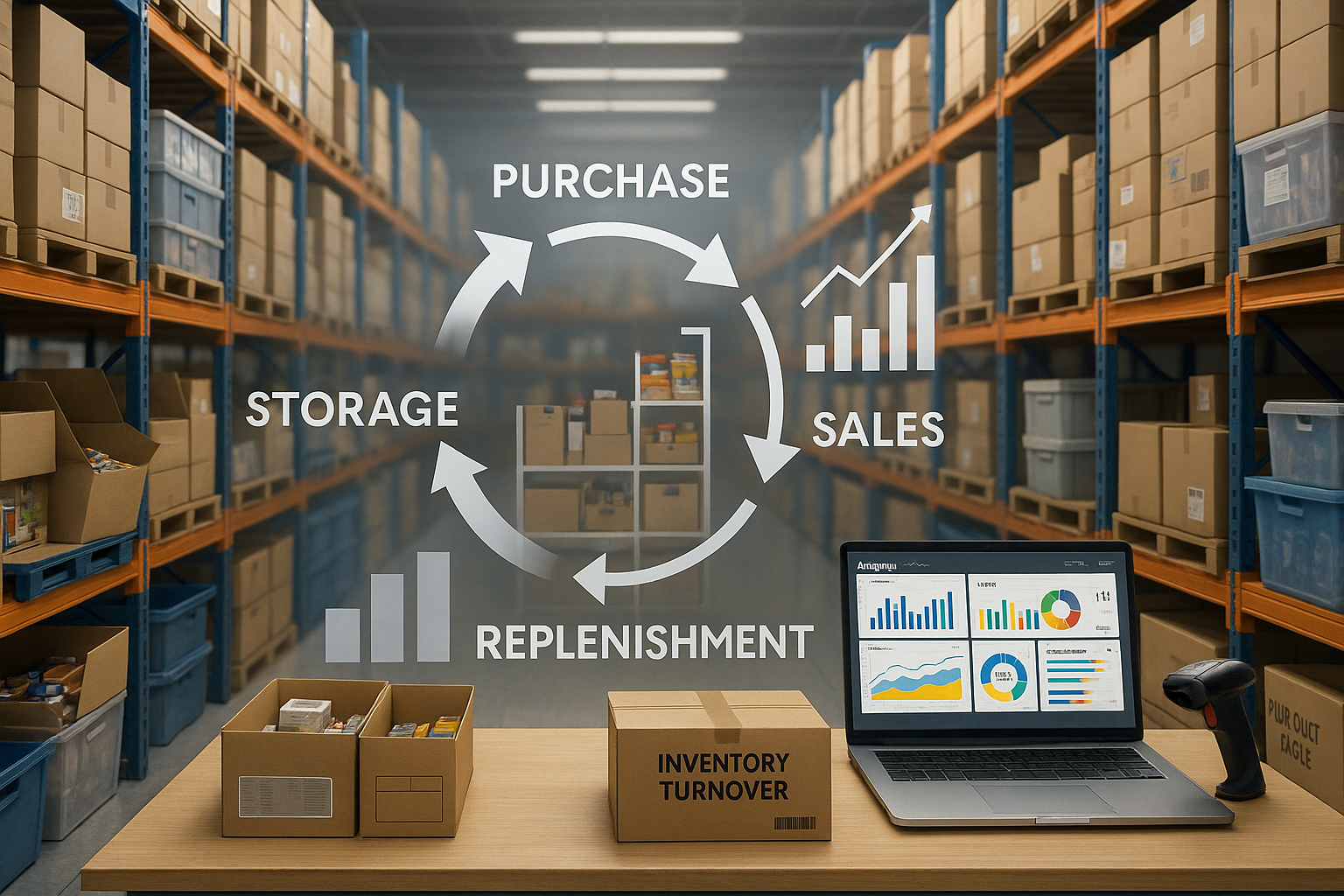Cosmetics Store Automation with ABM Inventory

What Is Automation in a Cosmetics Store?
Cosmetics store automation means transitioning from manual operations to digital solutions that handle routine tasks — from inventory tracking and order creation to sales analysis and promotion management.
In a competitive environment with seasonal demand shifts and complex assortments, automation enables accurate, transparent, and efficient inventory control. It allows business owners and managers to focus on growth instead of micromanaging day-to-day operations.
Automation typically covers key retail functions:
- stock level tracking and shelf-life monitoring,
- demand forecasting,
- stock replenishment,
- point-of-sale operations,
- sales analytics and promo performance,
- assortment management.
A modern inventory management solution adapts to the needs of various retail chains — whether in cosmetics, food, electronics, or other categories. These systems are especially valuable for scalable businesses where centralized control over inventory, stock distribution, and replenishment is critical.
Benefits of Automation for Cosmetics Retail
Cosmetics retail automation is not just a technological upgrade — it’s a strategic move toward improving profitability and operational resilience. Below are key advantages specific to the beauty and personal care sector:
Accurate Stock Control and Shelf-Life Monitoring
Cosmetic products and perfumes have limited shelf lives and may require controlled storage conditions. An automated inventory system allows real-time stock visibility and timely identification of items approaching expiration — helping reduce write-offs and build customer trust.
Faster Checkout
An integrated POS system speeds up transactions, applies discounts automatically, and syncs data with back-office systems. This is essential during peak hours, where quick service and short queues directly impact customer satisfaction.
Actionable Sales Analytics
Sales analytics by SKU, category, and promo campaign reveal what’s selling, what’s stagnating, and what’s influencing demand. BI tools offer clear visualizations that support data-driven decisions — not guesswork.
Smarter Promotions
Promotion management is critical in beauty retail. The system forecasts promo-related demand, helps plan stock accordingly, and reduces leftover inventory post-campaign — especially valuable for high-frequency promotions and seasonal sales.
Unified Retail and Online Operations
The system must seamlessly support both physical stores and e-commerce. Automation helps synchronize inventory across warehouses, stores, and online platforms, ensuring accurate stock availability and preventing over- or under-selling.
Reduced Labor Costs
Instead of spending time on spreadsheets and manual order entry, employees can focus on customer care and store development. Automation reduces workload, lowers error rates, and improves operational efficiency.
How to Choose an Automation System for a Cosmetics Store
With many solutions available, choosing the right automation and inventory platform for a cosmetics store can be challenging. Below are the key factors to consider:
Budget
Costs vary from basic POS tools to advanced ERP systems. Consider not only the license but also implementation, staff training, and integration costs. A good system is an investment that should pay off through process optimization and loss reduction.
Store Scale
A single-store setup and a chain of 50+ outlets require different functionality levels. Small businesses may need a lightweight POS solution; larger chains benefit from a scalable platform that centralizes stock, checkout, promo, and logistics operations.
Assortment Type
Cosmetics retailers manage thousands of SKUs — including imports, perfumes, makeup, personal care items, and short-lifecycle goods. The system must support features like expiry tracking, seasonality, promotion sensitivity, and packaging specifics. Inventory rotation and assortment matrix support are a big plus.
Integration with Existing Systems
The automation system should integrate easily with ERP, accounting tools, e-commerce platforms, and CRM. This minimizes data duplication and manual input errors, speeding up onboarding and allowing immediate access to historical data for demand forecasts.
Neglecting these factors may result in a system that’s too weak or unnecessarily complex. The best practice is to test the system in a pilot store and ensure it matches your operational goals.
Cosmetics Store Automation: Real-World Example
A large beauty and wellness retail chain implemented ABM Inventory to optimize its operations. The goal was to increase efficiency in stock management across both offline and online channels, especially in a fast-changing, high-SKU environment.
Common Challenges in Scaling Cosmetics Retail
The chain distinguished itself by offering exclusive imported cosmetics, with 60% of its assortment sourced directly. Its assortment matrix contained over 16,000 SKUs across various price segments — sold through physical stores and an online platform.
This scale and diversity created significant pressure on purchasing and logistics teams, particularly amid market volatility. Key challenges included:
Irregular and Extended Supply Lead Times
Due to complex international logistics, delivery times were often unpredictable. This led to frequent stockouts of high-demand products and lost sales opportunities.
Demand Forecasting Difficulties
To avoid running out of popular items, the chain had to overstock. As a result, excess inventory tied up working capital and increased write-offs.
We were looking for a tech solution that could ensure supply chain stability and allow us to consistently deliver quality products and service — even in a volatile environment. ABM Inventory gave us the tools to manage inventory more proactively and reduce operational uncertainty.
project manager, retail chain
Key Benefits of Implementing ABM Inventory
With ABM Inventory, the chain gained a powerful system tailored to the specific needs of cosmetics retail:
Automated Replenishment
Daily demand analysis enables the system to generate optimized replenishment orders, no manual input required automatically.
Advanced Demand Forecasting
ML-based models and scenario planning provide highly accurate sales forecasts, including for seasonal items, promos, and new product launches.
Reduced Stockouts
Automated demand tracking and regular forecast updates reduce out-of-stocks and missed revenue.
Inventory Optimization
The system balances excess and required stock, helping lower working capital and improve inventory turnover.
Better Promo Management
Promo demand forecasts allow for advance warehouse preparation, preventing gaps during high-demand periods.
KPI Visibility and Dashboards
Visual dashboards display real-time metrics — availability, lost sales, turnover — and enable data access in just a few clicks.
Increased Operational Efficiency
Automation freed employees from routine tasks, reduced error rates, and enabled teams to focus on strategic priorities.
The company is now scaling ABM Inventory across its entire retail network. Even in unstable markets with complex supply chains, automation has proven to be a reliable lever for improving performance.
ABM Inventory not only helps us reduce excess inventory and missed sales but also makes the entire supply management process more transparent and controlled. It supports both operational execution and strategic planning,

commercial director, ABM Inventory
Cosmetics Store Automation
What does cosmetics store automation include?
It covers all key retail processes: inventory tracking, POS operations, demand forecasting, replenishment, promotions, and analytics. Automation centralizes data, streamlines orders, and improves decision-making with accurate insights per SKU.
What processes can be automated in beauty retail?
-
Inventory and expiration tracking
-
Automatic stock replenishment
-
Promotion and discount management
-
POS and checkout
-
Optimal order size calculation
-
Inventory audits
-
Assortment management
-
BI analytics and KPI dashboards
-
Supply chain optimization and demand forecasting
How long does it take to implement an automation system?
It depends on business size, current IT infrastructure, and staff readiness. A pilot can be launched in 2–4 weeks, while full rollout may take 1–3 months including integrations and training.
What are the typical costs involved?
Main costs include:
-
Inventory software licensing
-
Implementation and integration
-
Staff training
-
Customization to match existing workflows
These costs are typically offset quickly by reduced losses, higher order accuracy, and improved efficiency — laying the foundation for scalable growth.



